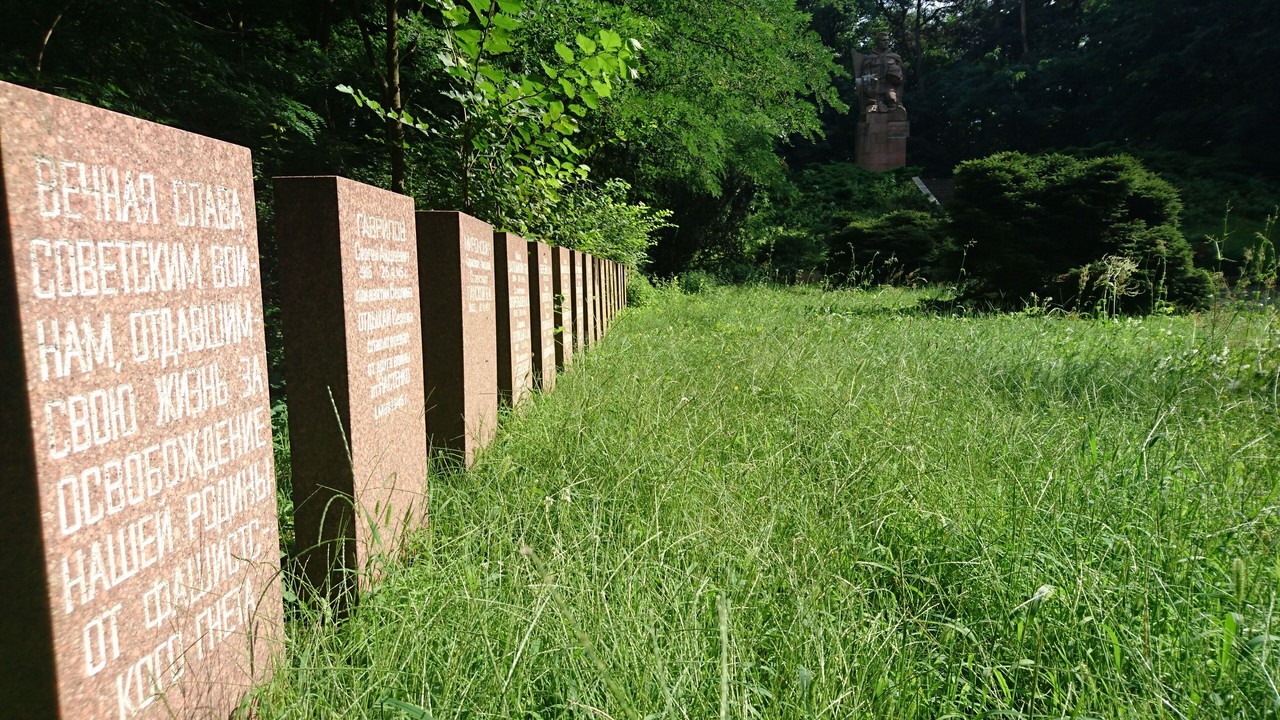The Red Army relentlessly advanced with a broad front towards the German capital Berlin. The Nazis had chosen the Seelow Heights as the last defensive stronghold before Berlin, as a steep slope of up to 90 metres lay between the plain of the Oderbruch and the Soviet deployment zone, and therefore represented favourable topographical conditions. Müncheberg lay within the last of a total of three lines of defence. The Battle of the Seelow Heights not only slowed down the Soviet advance, but was also the biggest battle on German soil during World War II. From April 16 to April 19, tens of thousands of soldiers died within just four days. After the Soviet army broke through the defence, the way to Berlin was open.
Nowadays, the Soviet War Cemetery in Müncheberg can be found along the road to Fürstenwalde. Shortly after the war had ended, the first fallen soldiers were transferred to the Kirchberg. On May 1, 1947, the cemetery was inaugurated with an obelisk. The site as we see it today was built in the late 1970s and is laid out in terraces. At its centre is a large star with the coats of arms of the 15 Soviet republics. Their purpose is to illustrate that the 239 Soviet victims buried here belonged to many different nationalities. The central element on the top level consists of a pedestal with a larger than life-sized Soviet soldier made of granite.
Source : Berlins Taiga
